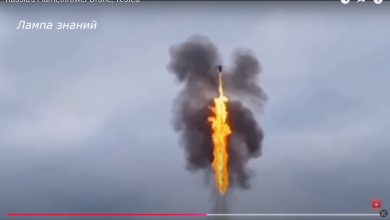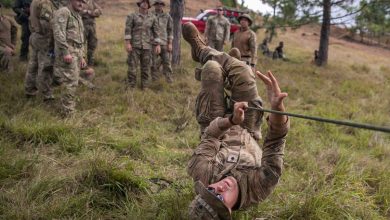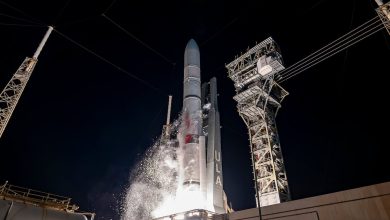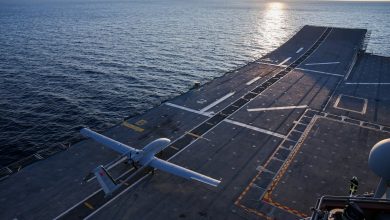Marine Corps F-35C notches first overseas combat strike
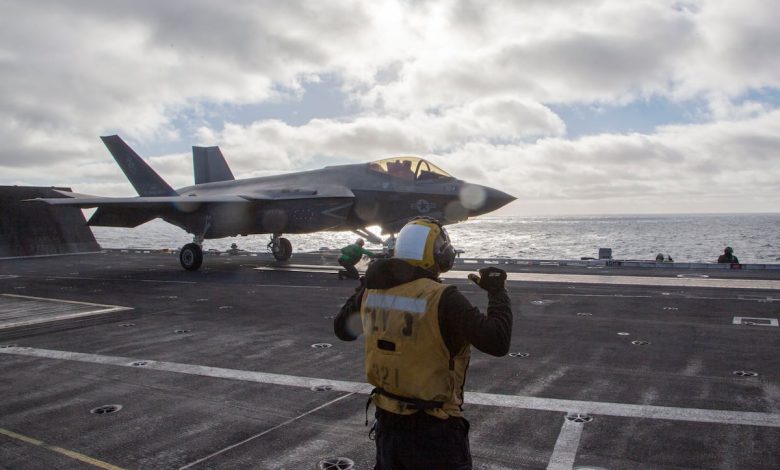
Marines recently carried out the service’s first combat strikes using the F-35C Lightning II Joint Strike Fighter during air missions against Houthi targets near the Red Sea and Gulf of Aden.
Launching from the aircraft carrier Abraham Lincoln on Nov. 9 and 10, the “Black Knights” of Marine Fighter Attack Squadron 314 (VMFA-314), 3rd Marine Aircraft Wing conducted multiple strikes on Houthi locations being used to target military and civilian vessels in the strategic waterway.
“The F-35C demonstrated its warfighting advantage by transiting contested airspace and striking targets in the heart of Houthi territory over multiple days,” Lt. Col. Jeffrey “Wiki” Davis, squadron commander, said in a release.
The F-35C is a fifth-generation, long range stealth fighter built by Lockheed Martin and used by the Marines, Navy and Air Force. It handles a variety of missions, from air combat and air-to-ground strikes to reconnaissance and electronic warfare.
The Marine Corps’ long-term aviation plan seeks to fully field all variants of the F-35 by 2030, phasing out aircraft such as the AV-8B Harrier and F/A-18C/D Hornet.
“The offensive and defensive capabilities of the F-35C absolutely enhance our air wing’s striking arm,” Capt. Gerald “Dutch” Tritz, Abraham Lincoln commander, said in the release. “The now battle-tested Air Wing of the Future has proven itself a game changer across all carrier air wing missions.”
The F-35C is engineered for carrier-based operations, with landing gear suited for catapult launches and arrested landings, and foldable wings that allow for easier storage on the carrier deck. The “C” variant holds more fuel than other versions of the single-seat jet, providing nearly 20,000 pounds of internal fuel capacity for long-range flights.
Before the F-35C, the U.S. military fielded the F-35A and F-35B. The “B” variant saw its first combat while carrying out airstrikes in 2018 against the Taliban in Afghanistan and Islamic State in Syria, according to the release. The “A” variant was first used in combat in 2019 against ISIS targets in Iraq.
As of July, the Corps had eight operational F-35B squadrons and two training squadrons, totaling over 100 F-35B aircraft globally, Marine officials said.
The Miramar, California-based VMFA-314 transitioned from the F/A-18 to the F-35C in 2020, making it the first fleet squadron in both the Marine Corps and Navy to fly the aircraft. The unit achieved initial operational capability that same year.
VMFA 311, Marine Aircraft Group 11, 3rd Marine Aircraft Wing, was the second F-35C squadron to achieve that mark. The “Tomcats” of VMFA 311 flew more than 900 sorties, totaling nearly 1,700 flight hours, and carried out another 800 simulator hours and 2,400 maintenance actions to reach initial operational capability, Marine Corps Times previously reported.
Earlier this year the Marines hit another F-35 milestone, when they flew their still-developing XQ-58A Valkyrie drone alongside four F-35Bs and other joint aircraft.
“The flight focused on the use of tactical data links to enable digital communication between the XQ-58A and an airborne four-ship of F-35Bs from Marine Fighter Attack Squadron 214 and other joint aircraft,” said Col. Derek Brannon, branch head for the Cunningham Group, deputy commandant for aviation.
In February the Corps saw its first F-35 squadron on the East Coast reach initial operational capability, when VMFA 542, 2nd Marine Aircraft Wing, out of Marine Corps Air Station Cherry Point, North Carolina, achieved that status.
Once at full operational capability, each wing will have six squadrons comprising 10 jets each.
The most recently available figures from the 2022 Marine Corps Aviation Plan listed a procurement goal of 353 F-35Bs and 67 F-35Cs, for a total of 420 aircraft.
Those acquisitions will fill out 18 active component squadrons in the Corps, according to the plan.
Todd South has written about crime, courts, government and the military for multiple publications since 2004 and was named a 2014 Pulitzer finalist for a co-written project on witness intimidation. Todd is a Marine veteran of the Iraq War.
Read the full article here


